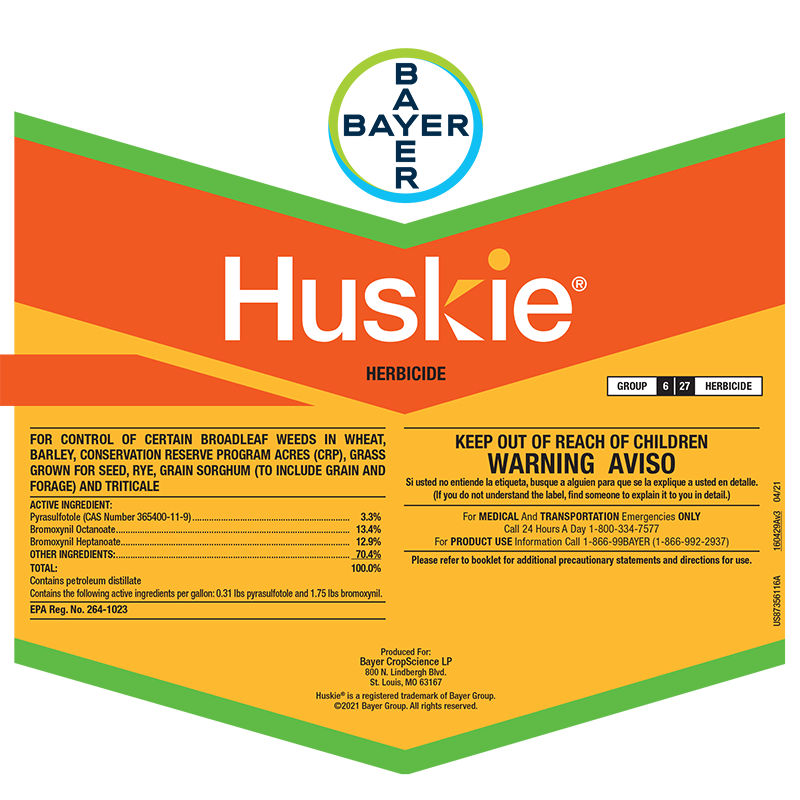Huskie Herbicide
HerbicidePowered by multiple sites of action (SOAs), Huskie® herbicide effectively controls a wide spectrum of broadleaf weeds, including resistant types.
Approved In
AK, AL, AR, CO, CT, DE, FL, GA, IA, ID, IL, IN, KS, KY, LA, MA, MD, ME, MI, MN, MO, MS, MT, NC, ND, NE, NH, NJ, NM, NV, NY, OH, OK, OR, PA, RI, SC, SD, TN, TX, UT, VA, VT, WA, WI, WV, WY
Labels / Safety Data Sheets (MSDS)
HUSKIE HERBICIDE Label
HUSKIE HERBICIDE MSDS - English
HUSKIE HERBICIDE MSDS - Spanish
Tank Mixture in Winter Wheat for Broad Spectrum Grass & Broadleaf Weed Control
For Control of Horseweed/Marestail in Wheat, Barley, & Rye Triticale
Chemigation Directions for Huskie Tankmixed with MCP Ester or Buctril 4 EC for use in Wheat or Barley
Effective Against
Our portfolio has products to fight a variety of weeds, pests and diseases.
Kochia
Other Pigweed Species
Palmer Amaranth
Prickly Lettuce
Russian Thistle
Registered Crops
Our products are available for use on a variety of different crops.
checkbarley
checksorghum
checkwheat
Additional Downloads
2017 Huskie Complete Application Card
Huskie Product Bulletin 2023
